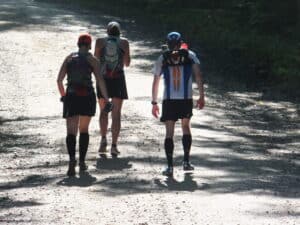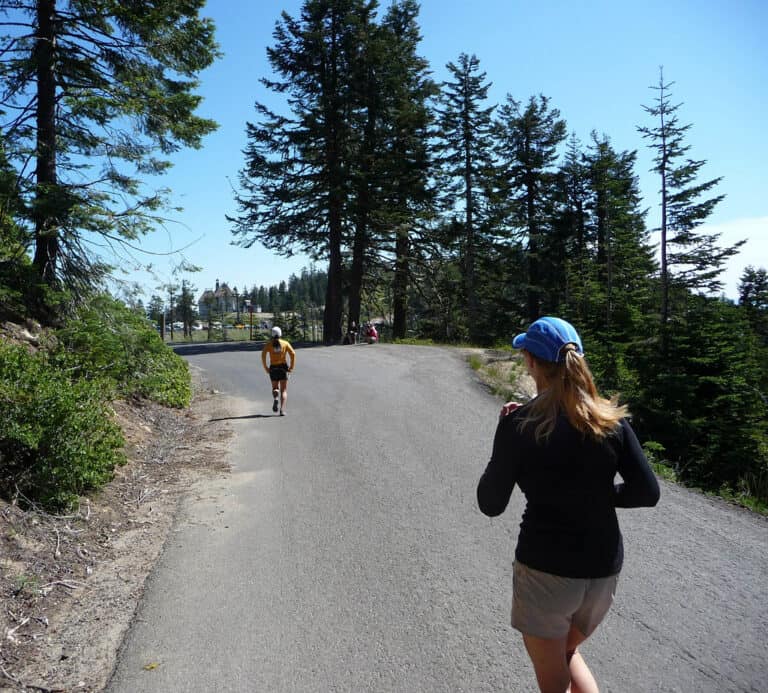When it comes to trail running, conquering uphill terrain presents its own unique set of challenges. Whether you’re a seasoned trail runner or a newbie looking to venture into more challenging landscapes, mastering the art of uphill running is essential for success. Uphill trails offer a wide variety of terrains, from rocky slopes to muddy inclines, and understanding the right techniques can make all the difference. In this comprehensive guide, we’ll explore the strategies and skills you need to navigate uphill trail running with confidence. Let’s dive in!
The Basics of Uphill Trail Running

Before we delve into specific techniques for different terrains, it’s crucial to understand the fundamentals of uphill trail running. Uphill running is a physically demanding activity that engages your cardiovascular system, leg muscles, and overall stamina. The steeper the slope, the more power and energy expenditure are required. Here are some basic concepts to keep in mind:
1. Uphill Running vs. Flat Ground Running
Running uphill differs significantly from running on flat ground. The most noticeable change is the increased effort required, which impacts your pace and energy expenditure. To be successful at uphill trail running, you need to adapt your stride, focus on your form, and maintain a consistent pace.
2. Uphill Trail Races
Uphill trail races are a popular choice for many trail runners. These races often feature steep hills and long climbs that challenge even the most seasoned runners. To excel in these races, it’s crucial to have a firm grasp of the necessary techniques.
3. Terrain-Specific Demands
Different terrains, including rocks, mud, and other obstacles, require specific approaches. To tackle these terrains effectively, trail runners must adapt their techniques to maintain a steady pace and avoid injuries.
Mastering Uphill Trail Running Techniques

1. Proper Stride Length
One of the key factors in uphill running is stride length. When running uphill, shorter strides are more efficient. Short steps allow you to maintain a consistent pace while conserving energy. This is especially important when dealing with steep hills.
2. Power Hiking
Power hiking is a valuable technique for tackling steep terrain. Instead of running, switch to a brisk walking pace with an exaggerated arm swing. This technique can be less taxing on your body while allowing you to make progress on steep slopes.
3. Upper Body Engagement
While it’s easy to focus on your legs during uphill running, your upper body also plays a crucial role. Engage your arms to help propel you forward and maintain balance. Using your arms effectively can make a significant difference in your ability to conquer steep terrain.
4. Maintaining a Higher Cadence
A higher cadence, or the number of steps you take per minute, can be advantageous when running uphill. A faster cadence helps to keep your lungs open, your pace steady, and your energy expenditure in check. It’s a skill that takes practice but can greatly benefit your uphill running performance.
Tackling Specific Terrains

1. Running on Rocks and Mud
Running on rocky or muddy terrain requires a high level of agility. Your ability to adapt your stride to avoid obstacles and maintain balance is crucial. In rocky terrain, opt for short, quick steps to navigate the uneven surface effectively. In muddy conditions, focus on foot placement and maintaining traction.
2. Technical Trails
Technical trails often feature a combination of challenging terrains, including rocks, roots, and steep hills. Navigating these trails efficiently requires adaptability and quick decision-making. Remember that each step counts, so choose your path carefully.
3. Long Uphills
For long uphill sections, it’s important to find a sustainable pace. Avoid the temptation to start too fast, as you’ll need to conserve energy for the duration of the climb. Maintaining a steady effort level is key to successful long uphills.
Downhill Running
While our focus has been on uphill running, it’s essential to mention downhill running as well. Downhill sections can be equally demanding and require different techniques. Engaging your upper body, maintaining balance, and managing your stride are critical skills for downhill running.
The Art of Uphill Techniques for Different Terrain
Uphill trail running is an art, and to master this art, you must be adaptable to the varying terrains you encounter. Let’s explore some advanced uphill techniques that will help you thrive on different types of terrain.
Trail Running on Varied Terrain: Adapting to Nature’s Challenges
Trail running enthusiasts know that nature often throws unexpected challenges their way. When it comes to uphill trail running, understanding how to adapt to varied terrain is crucial for a successful and enjoyable experience.
1. Elevation Gain Awareness
Each terrain you encounter will have its unique elevation gain. Whether it’s a steep hill, a rocky slope, or a muddy incline, being aware of the elevation changes ahead can help you mentally prepare and strategize your approach. By knowing what’s coming, you can adjust your pace and conserve energy for the steepest sections.
2. Efficient Foot Placement
The type of terrain you’re running on plays a significant role in determining your foot placement. On rocky terrain, look for solid footing and use your whole foot to ensure stability. When tackling muddy sections, aim for a flatter area with more traction. Adapting your foot placement to the terrain will help you maintain a consistent stride and reduce the risk of slipping or stumbling.
3. Energy Management
Running on varied terrain demands effective energy management. Be mindful of the energy you’re expending and how different terrains affect your effort level. Adjust your pace and technique accordingly. For example, in a trail race featuring steep hills and technical sections, consider reserving more energy for the uphill portions and recovering on the downhill stretches.
The Trail Running Journey: Uphill Techniques for Different Terrain

As you progress in your trail running journey, you’ll discover that mastering uphill techniques for different terrain is an ongoing process. Here are some insights to help you navigate this exciting journey.
1. Incorporating Hill Sprints
Hill sprints are a fantastic way to improve your uphill running abilities. Find a relatively steep hill and perform short, intense sprints. Hill sprints enhance your leg strength, power, and anaerobic capacity, making uphill running on varied terrain feel more manageable. They also boost your running economy, allowing you to cover ground with less effort.
2. Training for Long Climbs
Long climbs can be both physically and mentally demanding. Training specifically for long uphill sections is essential. Focus on building your endurance and cardiovascular fitness. Include long, sustained uphill runs in your training regimen to accustom your body to the extended effort required for this type of terrain.
3. Research Focus: Running Economy
In the world of trail running, research increasingly focuses on improving running economy, which is the ability to maintain a steady pace with minimal energy expenditure. Incorporating techniques to enhance your running economy is beneficial when tackling varied terrains. This includes optimizing your stride, breathing, and body position to maximize efficiency while conserving energy.
Final Thoughts
Uphill trail running offers a unique and challenging experience for trail runners. By mastering the techniques mentioned in this guide, you can confidently conquer different terrains and take on steep hills with ease. Remember that practice is key, and each trail run provides an opportunity to refine your skills. Whether you’re racing in uphill trail races or simply seeking the thrill of the hills, the right techniques will make a world of difference. Happy trail running!
